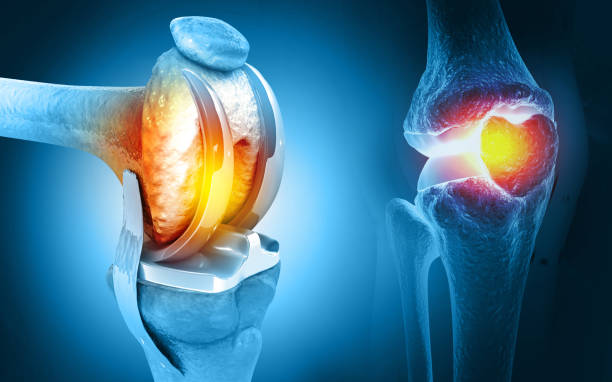Life After Constant Knee Pain: What to Know About Total Knee Replacement
There’s a certain kind of pain that creeps into your everyday life and just stays there. You feel it when you get out of bed. When you climb the stairs. When you try to walk more than a few steps. That’s what living with a bad knee feels like—and it wears you down slowly.
At first, maybe it’s an occasional ache. Then it becomes something you’re managing all the time. You stop going for long walks, you hesitate before going out with family or friends, and eventually, it starts to feel like your world is getting smaller.
For a lot of people in this situation, total knee replacement becomes the option that finally brings some real relief.
So, What Is Total Knee Replacement?
To put it plainly: the damaged parts of your knee are removed and replaced with artificial parts that are designed to work like a healthy knee. It’s most often done when the joint is too far gone to be helped by injections, medication, or physical therapy.
Osteoarthritis is usually the main culprit, but injury and other conditions can also lead someone down this road. It’s not something you jump into. It’s usually the result of months or years of trying everything else first.
When Do You Know It’s Time?
Here’s the truth: only you really know when it’s time. Maybe you’ve been getting by for years, pushing through the pain and adjusting your lifestyle. But there comes a point when even the smallest things become difficult.
If your knee pain is stopping you from doing things you love—or even just living your day-to-day life comfortably—it might be time to talk to a specialist. Not to rush into surgery, but to get real information from someone who listens.
At places like Adam Vital Hospital, you don’t just walk in and get booked for surgery. The team takes the time to evaluate whether you really need it. They’ll ask the right questions, look at your history, and explain things without pushing you.

What Happens During the Surgery?
This is where a lot of people get nervous. But the surgery itself is fairly routine these days—especially when you’re in experienced hands.
Here’s the short version: the surgeon removes the worn-out surfaces of your knee joint and replaces them with a new, artificial joint. It’s designed to help you bend, walk, and move without pain grinding through your bones.
The procedure usually takes about 1–2 hours. You’ll be up and moving (carefully) with help the next day. Most people are surprised by how quickly they’re encouraged to walk. But moving early is actually part of the healing process.
What’s Recovery Like?
Recovery is where the real work starts. You’ll need to do physical therapy—sometimes even when it’s the last thing you feel like doing. It’s tough in the beginning. There will be pain and swelling, and you’ll probably have days where you feel like you’re not making progress.
But ask anyone who’s been through it—they’ll tell you that one day, something shifts. You notice you’re walking better. Sleeping better. You get up from a chair without that familiar ache. And it builds from there.
Most people are doing a lot better after six weeks, and by three months, life is starting to feel normal again. Full recovery can take up to a year, but you’ll feel the difference long before that.
Does It Really Work?
Yes—and not just in terms of walking pain-free. For many people, it gives them back parts of their life that they had slowly given up on. Things like playing with grandkids, going on trips, gardening, or simply standing in the kitchen without having to lean on something.
It’s not magic, and your new knee won’t feel exactly like your old one used to. But it won’t hurt the way it did either—and that’s a trade most people are very happy with.
Why the Hospital You Choose Matters
There’s a big difference between getting a knee replaced and getting it done right. You want a hospital that doesn’t just look at your X-ray, but looks at you—your lifestyle, your recovery, your needs.
At Adam Vital Hospital, the care doesn’t stop when the surgery ends. The team walks with you through recovery, checks in on your progress, and helps you get your confidence back. It’s the kind of place where you feel seen, not just treated.
Final Word
Total knee replacement isn’t for everyone—but for many, it’s the chance to stop living a life defined by pain. It’s not about turning back the clock. It’s about reclaiming your days, one step at a time.
If you’re in that in-between space—where you know something needs to change, but you’re not sure what to do next—have the conversation. Learn more. Ask the hard questions.
There’s no pressure. Just options. And that, on its own, can be a big relief.
Comments
Post a Comment